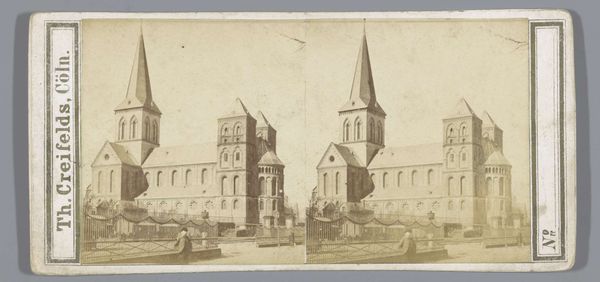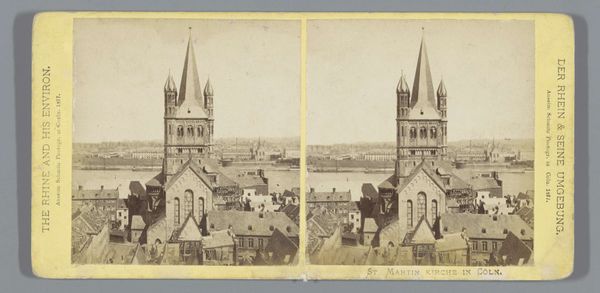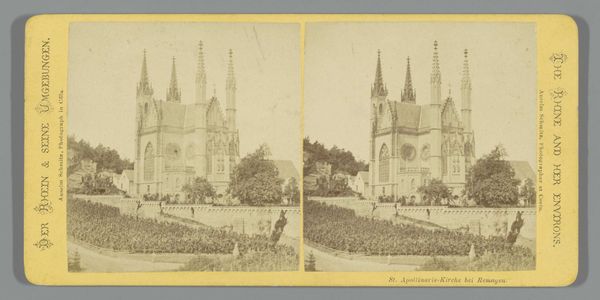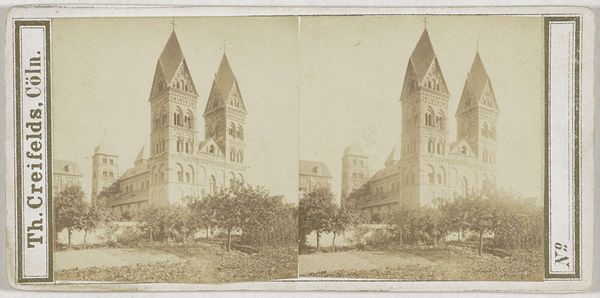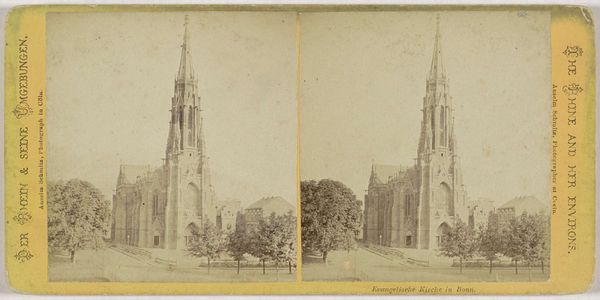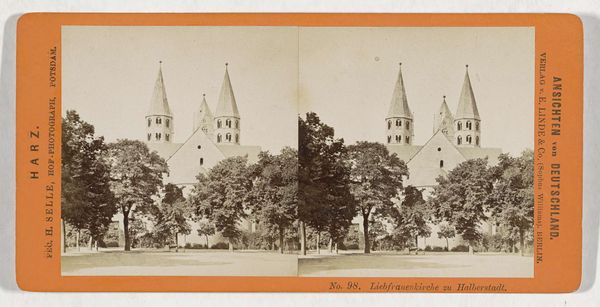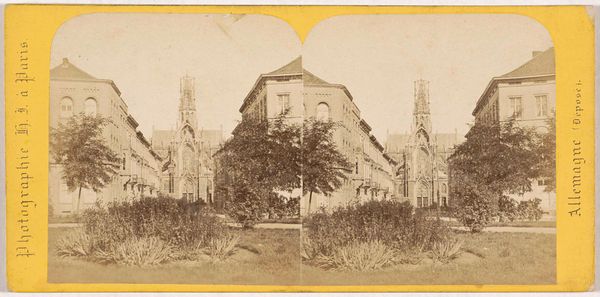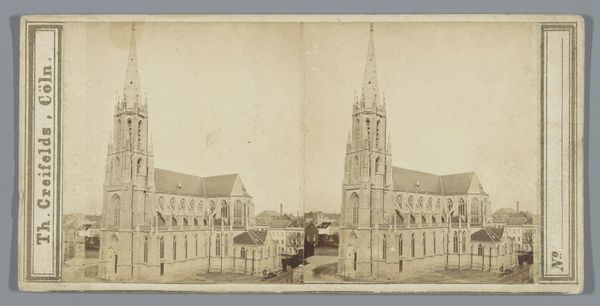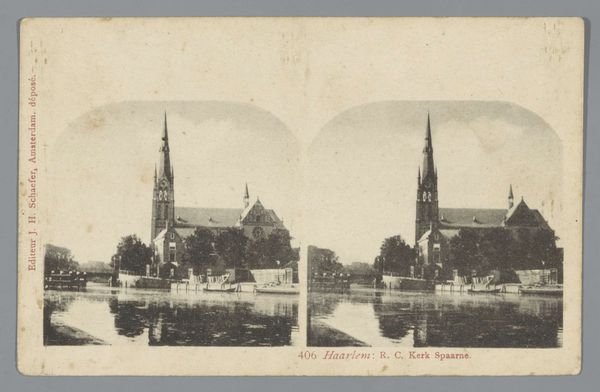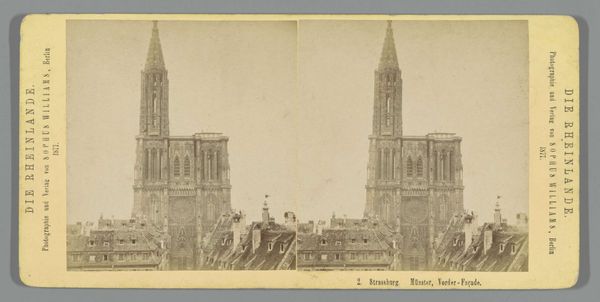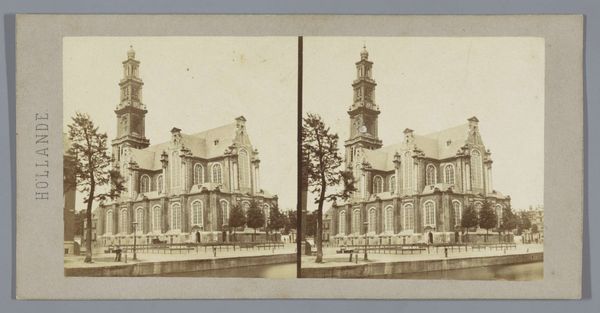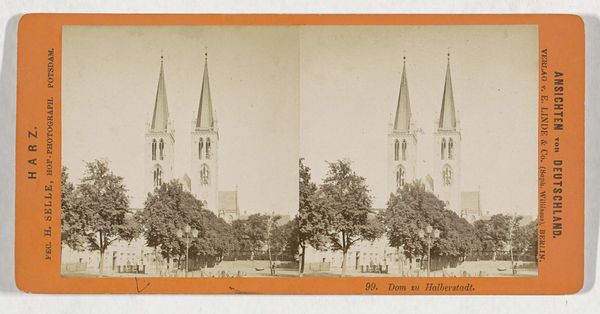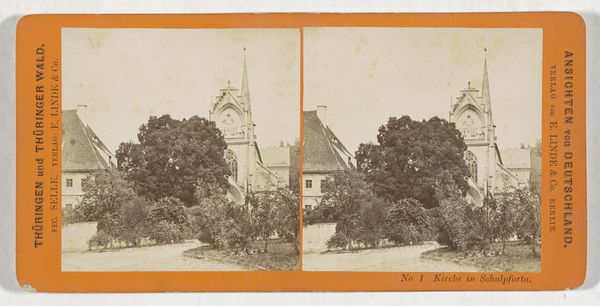
Dimensions: height 86 mm, width 176 mm
Copyright: Rijks Museum: Open Domain
Curator: This is an albumen print titled "Exterieur van de Kreuzkirche in Wroclaw, gezien vanaf Augusta-Platz" taken by Sophus Williams in 1878. There’s an undeniable stillness to it, but also an almost unsettling feeling, possibly from the double image. How would you approach understanding this piece? Editor: Given your materialist perspective, where do you start when you see a photograph like this? What elements are most relevant to you? Curator: Well, for starters, the gelatin-silver print process itself. In 1878, this was a relatively recent technological development, democratizing photography in a way. It shifted photography from the realm of the wealthy and experimental toward wider social use. We should also ask what materials were necessary for Sophus Williams to achieve the image: from the photographic plate to the specific chemicals and their sources of supply. That access indicates production methods within a social class, which gives a deeper perspective of the creator's means. Editor: That makes a lot of sense. The materials really do tell a story about accessibility and how widespread this photographic technique was. Curator: Precisely. The mass production of photographic prints speaks volumes about consumer culture at the time. Was this a commodity for tourists? Or for local pride and record-keeping? That's part of the social context. What's interesting to also consider is the labor. We often think about photography in its finished state. But the process is about labour, it is tangible and part of the whole consumption cycle of photography. The same goes for architecture of this scale. So, we should consider that the church, like the photography, are human products. Editor: So, instead of seeing it just as a beautiful image of a church, we can trace its material origins and social impacts. Thank you for clarifying the importance of that material context! Curator: Exactly. Hopefully now you'll view historical artworks not only for their visual representation, but through all production process chains and social aspects, including labor, class, consumption, and production of the materials that facilitated the art’s very existence.
Comments
No comments
Be the first to comment and join the conversation on the ultimate creative platform.
